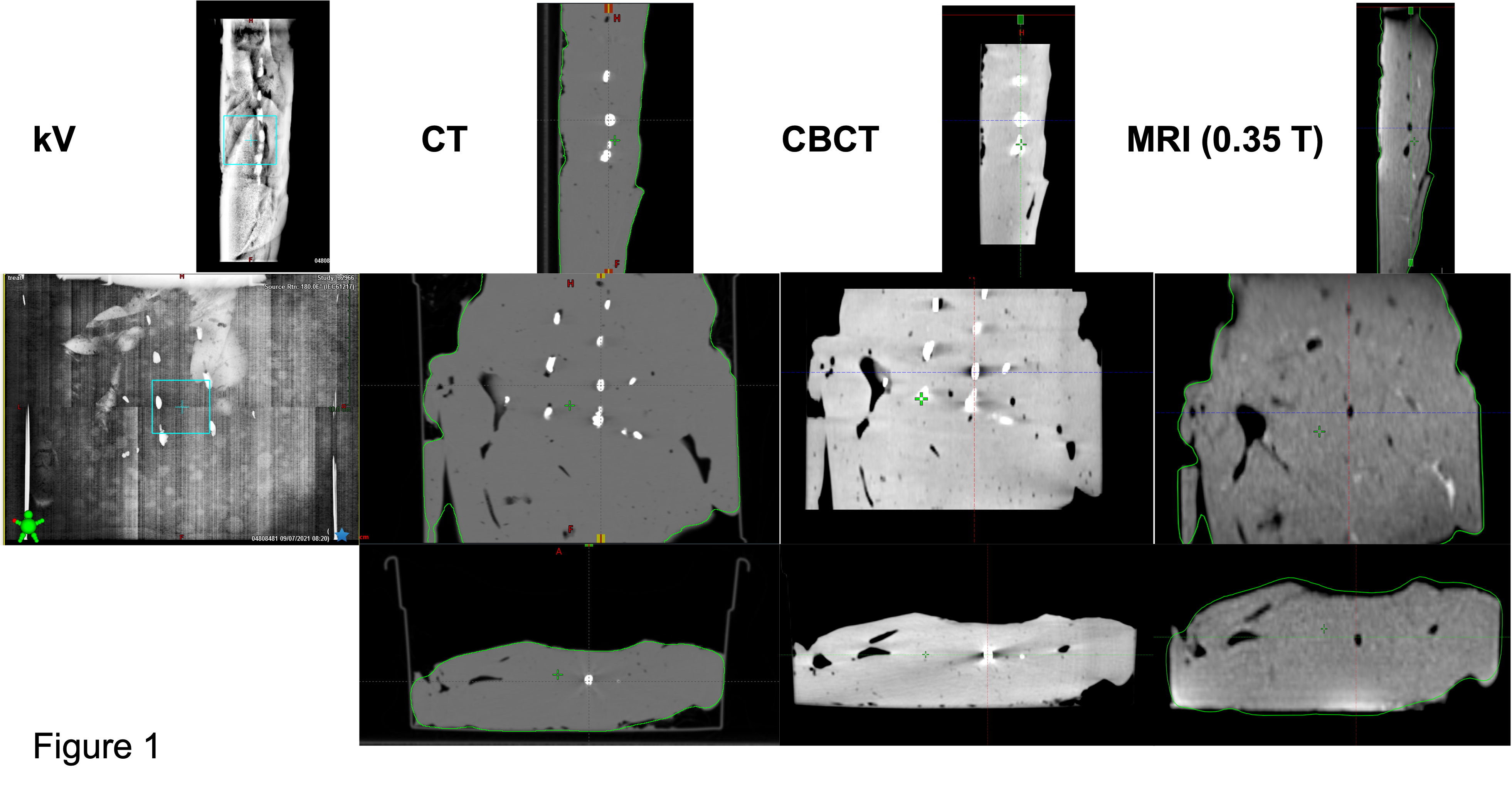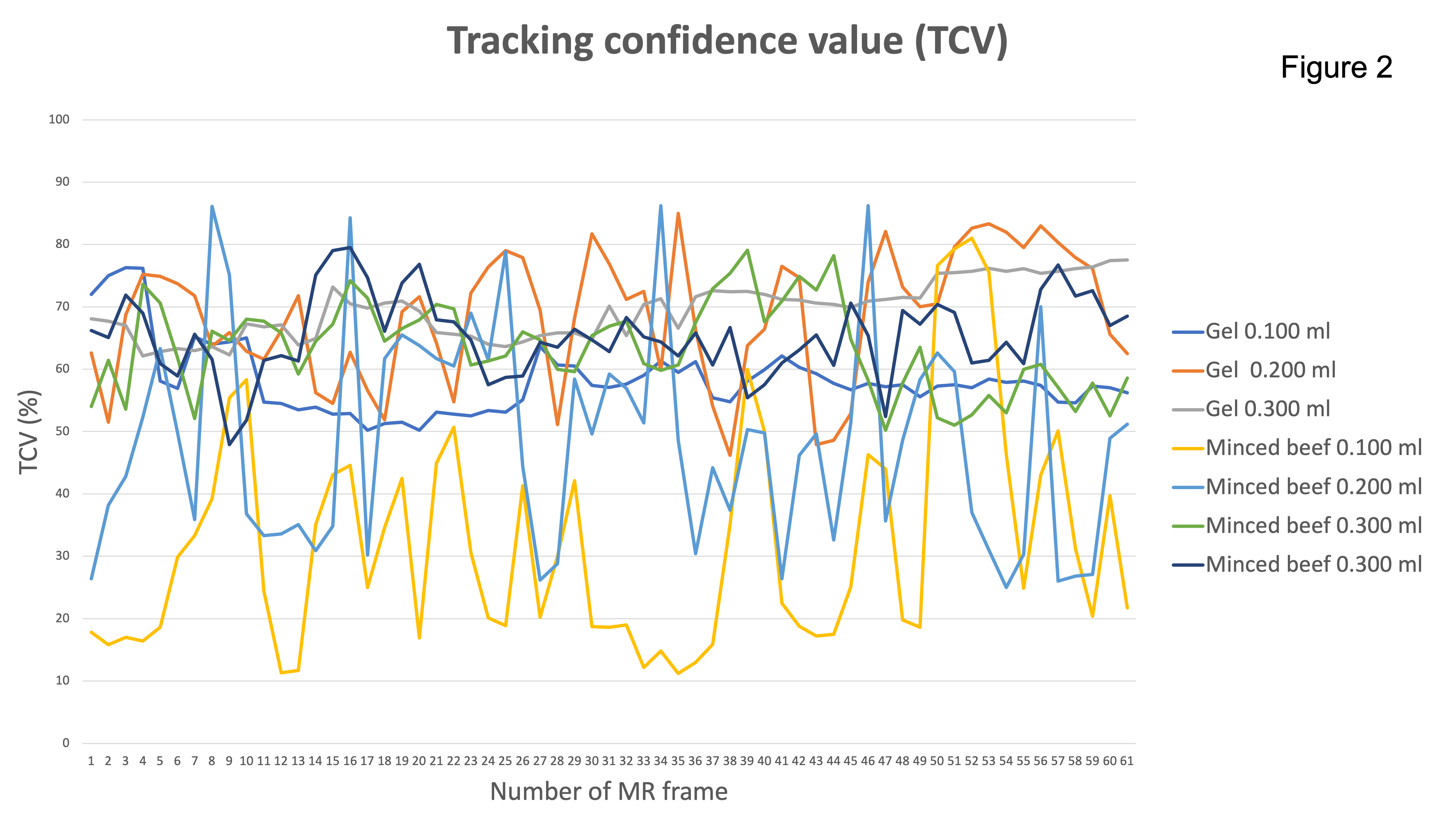Characterization of injectable marker in a low tesla MR-Linac for online tracking of liver tumour
PO-1705
Abstract
Characterization of injectable marker in a low tesla MR-Linac for online tracking of liver tumour
Authors: Lorenzo Placidi1, Matteo Nardini1, Dan Calatayud2, Amedeo Capotosti1, Davide Cusumano1, Roberto Moretti1, Maria Antonietta Gambacorta1, Vincenzo Valentini1, Luca Indovina1, Luca Boldrini1
1Fondazione Policlinico Universitario A. Gemelli IRCCS, Radiation Oncology, Rome, Italy; 2NANOVI A/S, Diplomvej 378, NANOVI, Lyngby, Denmark
Show Affiliations
Hide Affiliations
Purpose or Objective
Magnetic Resonance guided Radiotherapy (MRgRT) allows an online gating of the tumor during treatment delivery. It can occur that due to image resolution and low contrast, lesions are not always visible and online gating could be compromised. A novel liquid injectable fiducial marker has been characterized in a low tesla MR-Linac system.
Material and Methods
The evaluated fiducial marker (BioXmark®) is a liquid, sticky and soft iodine-based marker enabling an implantation of size customizable markers in one injection. Multi-imaging modalities marker evaluation has been performed implanting eleven markers (3 of 0.05 ml, 4 of 0.10 ml, 3 of 0.20 ml and 1 of 0.30 ml) in a cow liver. Different imaging modalities have been acquired: orthogonal kV, cone beam CT (CBCT), CT and 0.35T TRUFI MRI. Additionally, a cine MRI (8 frames per second) has been acquired. Spatial resolution accuracy has been evaluated.
Marker suitability for MRgRT gating system has been performed placing different marker sizes (0.10,0.20 and 0.30 ml) in different vials, filled with hand gel (65% ethanol) and minced beef, as example of respectively high and low contrast. The vials have been placed on the belly of a volunteer mimicking a breath hold treatment, to evaluate the visibility of the marker using online MR imaging.
Tracking confidence values (TCV) was used to quantify the tracking quality of the marker, once the marker was completely inside the tracking boundary.
A total of 62 MR frames was analysed, considering a TCV of 50% as threshold to switch off the beam. TCV is an estimation of the similarity of continuos frames.
Results
Multi-imaging modalities evaluation (figure 1) confirms previous studies, showing the suitability to use the fiducial marker in orthogonal kV, CBCT and CT. Small artifacts (negligible for contouring aims) were observed in the CT and CBCT image dataset. MR TRUFI images reveal for the very first time, optimal marker spatial resolution, appearing as an hypointense spot. Selection of the in-plane voxel sizes could obviously affect the results. When rigidly fused, CT and MRI images show an excellent matching of the markers.

TCVs highlight the dependency of the marker size and the surrounding medium contrast, as shown in figure 2. Concerning the vial containing minced beef, the lowest mean (over the 62 images) TCV was 32.4% (marker size of 0.10 ml). Fiducial marker of 0.20 ml has an higher mean TCV (48.6%) but with bigger variability (standard deviation of 17.1%). On the other hand, fiducial marker of 0.30 ml shows a TCV over the 50%. All the fiducial markers (0.1 ml, 0.2 ml and 0.3 ml) contained in the hand gel vial present a tracking confidence value always higher than 58.2%.

Conclusion
The evaluated fiducial marker can be employed in the MRgRT system, providing an adequate spatial accuracy for the volumetric 3D MR TRUFI image as well as for cine MR gating purposes. Clinical use of the markers for patients affected by liver cancer is under scheduling.